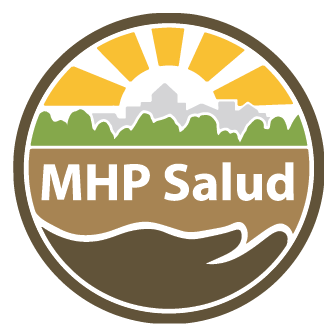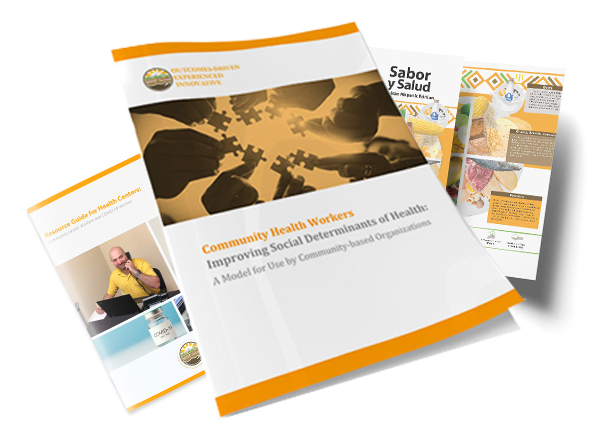Utilizing AI Tools to Amplify Community Health Workers (CHW’s) Impact within Health Centers: A 2-Week Starter Plan
Each October, National Health Education Week reminds us that accessible, clear health information is not just nice to have — it's essential. For CHWs in Health Centers, who serve as trusted bridges between health systems and the public, making health information understandable is part of the job every single day.
But even the best CHWs are working against the clock: long forms, confusing handouts, resource lists that go out of date, and follow-up calls that take too much time. That is where artificial intelligence (AI) tools come in. This article gives you a 2-week starter plan to begin using AI to:
- Rewrite handouts in plain language
- Translate and verify materials across languages
- Build one-page resource lists
- Draft call scripts and client texts
- Summarize notes without exposing private data
These tools do not replace CHWs. They support your judgment, save you time, and help clients understand next steps.
What Problem Are We Solving?
Clients face long forms, shifting eligibility, and instructions in confusing language. CHWs often feel the same strain. Every day, you translate medical terms, chase down service hours, and juggle paper trails. AI will not fix every gap. But it can help you:
- Make materials easier to read
- Translate faster while keeping meaning
- Organize resource lists that stay current
- Summarize visits without revealing client details
Studies show AI can support frontline care. One U.S. health system found that when CHWs helped collect and structure data, it improved their hospital readmission predictions by 5% (DePaul Newsroom, 2024). Tools like ASHABot, a chatbot developed for CHWs in India, are already meeting field-level information needs (CHW Central, 2024). Many CHWs and safety net providers face barriers to AI adoption—including digital access, data concerns, and limited training—underscoring the need for low-barrier tools that work in real-world settings (California Health Care Foundation, 2023).
Five AI Use Cases You Can Deploy Now
1) Make Materials Easy to Read
Goal: Create handouts clients understand on the first try.
How: Paste your draft into an AI tool. Use this prompt:
"Rewrite the text below at an 8th-grade reading level. Use short sentences. Replace medical terms with everyday words. Keep all facts. End with a three-step 'What to do next.' Text: [paste text]"
Result: Clearer instructions. Fewer callbacks.
2) Translate and Verify Across Language Gaps
Goal: Share accurate, respectful information in other languages.
How: Use AI to draft a translation. Have a bilingual colleague check it.
Prompt: "Translate this for [language]. Use everyday language. Keep phone numbers and dates exact. Do not add content. Text: [paste text]"
Optional: "Back-translate this [language] text to English so I can confirm the meaning."
Result: Faster communication across language differences.
3) Build a One-Page Resource List
Goal: A clean, reliable list of key local services.
How: Ask AI to format resources into a table. Then verify each one.
Prompt: "Create a one-page resource list for [ZIP or county] on [need]. Columns: Program, What it helps with, Phone, Hours, Eligibility, Languages, Last Verified. Use only the items below. Leave 'Last Verified' blank. Resources: [paste items]."
Result: Less hunting. More successful referrals.
4) Draft Call Scripts and Client Texts
Goal: Clear messages that reduce no-shows.
How: Use AI to create brief, respectful scripts for common outreach.
Prompt (call script): "Write a short phone script for a CHW calling [program] to confirm hours, eligibility, and languages served for residents in [ZIP]. Friendly and professional. 80 words or less."
Prompt (text): "Write a text a CHW can send a client for [service]. Include phone, hours, and what to say when they call. 160 characters or less."
Result: Clients understand exactly what to do.
5) Summarize Notes and Next Steps (Without Private Data)
Goal: Faster paperwork and better follow-up.
How: Paste de-identified notes into AI to create a short summary.
Prompt: "Summarize these de-identified case notes into three bullets: client goal, actions taken, and the next step within 48 hours. Do not include personal identifiers. Text: [paste notes with placeholders]."
Result: Easy handoffs. Clear next steps.
Guardrails That Keep People Safe
- Never paste names, birthdates, addresses, or medical record numbers.
- Use placeholders like [Client], [Clinic], or [DOB mm/yy].
- Treat AI output as a draft. Always review it first.
- Verify all contact details by phone every quarter.
- Store final documents in secure systems only.
- Avoid idioms that may confuse language groups.
Two-Week Rollout Plan for CHWs
Days 1-2: Pick two workflows (e.g., handout rewrite and resource list). Assign a lead and reviewer.
Days 3-5: Use prompts to build version 1. Verify two key resources by phone.
Days 6-8: Translate if needed. Do back-translation checks. Finalize files.
Days 9-10: Train team in 30 minutes. Show where files live. Practice one script or text.
Days 11-14: Pilot with 10 clients. Track:
- % of clients with next step scheduled within 48 hours
- Grade level of handouts
- Number of resources verified this week
Why This Adds Value for CHWs
This is not just another website or app. It is a way to do what you already do — education, outreach, referrals — but faster and clearer. AI tools help CHWs:
- Cut down on paperwork
- Improve client understanding
- Strengthen follow-up
- Save time without lowering quality
And most of all, they keep you in control. You choose what to use and how to adapt it.
Call to Action
Pick one of the five workflows above. Try it this week. Share the results with your team.
Then keep building. Stay curious. Stay sharp. These tools are meant to support the vital work you already do every day.
References
- DePaul University. (2024). CHW-AI partnership boosts health prediction accuracy. https://resources.depaul.edu/newsroom/news/press-releases/Pages/tchoua-ai-sinai-health-2024.aspx
- CHW Central. (2024). ASHABot: An LLM-Powered Chatbot for CHWs. https://chwcentral.org/resources/ashabot-an-llm-powered-chatbot-to-support-the-informational-needs-of-community-health-workers/
- California Health Care Foundation. (2023). AI Tools for Safety Net Providers. https://www.chcf.org/resource/ai-tools-promise-better-care-challenge-safety-net-providers/





